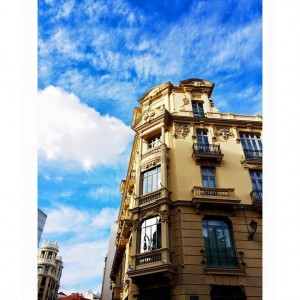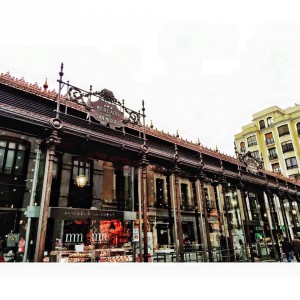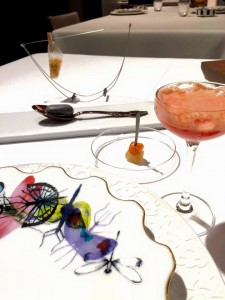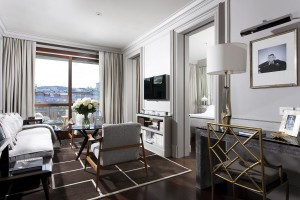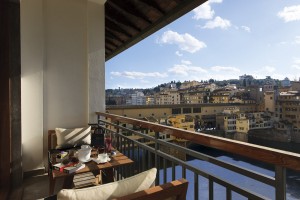A modern day grand tour across Europe continues with Spain and Italy.
Story and Photos by Sery Kim
Having traversed through France, England and Portugal on the first half of a quintessential continental tour, the eye turns to rounding out the perfect European journey through the romantic terrain of Spain and the divinely inspired Italy.
SPAIN
Located on Europe’s Iberian Peninsula, the storied legacy of Spain as a vast global conqueror means our history books (and imaginations) are rife with images of swash-buckling conquistadors — and of course King Ferdinand and Queen Isabella blessing Christopher Columbus on his journey to discover the “New World.”
WHAT TO DO: Discover for yourself the glories of Spain in its capital Madrid. Founded in 865 by Arabs, Madrid remained in Islam’s hands until 1083 before switching between the Habsburgs (Austrian/German) and Bourbons (French) until finally settling with the Spanish. This cultural amalgam can be found throughout the architecture of Madrid; however, one of the most interesting architectural structures in Madrid is Templo de Debod. An ancient Egyptian temple, located in bustling Calle Ferraz, was dismantled and built high upon the hills of Madrid. Walking inside, one can look at the hieroglyphics while at its rear an immaculate view of the city, as well as the Royal Palace, can be found.
Take the quick 10-15 minute walk from the Templo de Debod over to the Royal Palace, still the official residence of the King and Queen of Spain. While it does cost 10 euros to enter, being able to see the grandiose chandeliers alone is worth the price of admission. Of particular note is the seemingly endless dining saloon where state dinners are still held. (No photos are allowed inside so word to the wise because the security guards definitely followed me after I snapped a photo.)
Walk another 40 minutes to the sensational Prado Museum. Home to some of the greatest pieces of European art — Goya, Velasquez, Morales to name a few — the Prado’s simplistic design with tremendous amounts of natural light allows the breathtaking paintings to move you. If you love art or just love to be inspired, the Prado could easily take up several days of viewing.
WHERE TO STAY: Rest for a bit at the best hotel in Madrid right now, Hotel URSO. A boutique luxury hotel located within walking distance — walking is a perennial theme for any good European — of everything has a sensual beauty. Plus the bed is very comfortable and the price is ridiculously affordable at less than $200 U.S. a night.
WHERE TO EAT: Break for lunch at the vibrant Mercado de San Miguel, Madrid’s better and tastier version of D.C.’s Eastern Market. Located a 15 minute walk from the Royal Palace, this historic market in Madrid’s Old District has a wealth of deliciously, inventive cuisine. Try some of Spain’s famous jamon iberico or the burrata bar before bingeing through all the sweets. You can’t go wrong.
Close Madrid with a gastronomic tour de force at Ramon Freixa. Owner of two-Michelin stars, Chef watches over his “home” with a cheerful exuberance evident in the tasting menu which courses generously with divine Spanish wine. The food is bright, remarkable and yet not so “inventive” a regular meat-and-potatoes American couldn’t enjoy it. Worth every penny but if its not in your budget than try the stately Ritz Madrid. The heavier plates comfort rather than excel; however, the meatballs are truly delicious.
ITALY
Many feel a visit to Europe should begin and end with Italy, and you will find no argument here. Venice, Rome, Naples, Sicily, the Amalfi Coast (Positano, Praiano, Ravello, Capri). Deciphering between where to begin an Italy journey is truly a conundrum; however, why not begin with the dream that is Florence, i.e. the birthplace of the Renaissance.
WHAT TO DO: With endless expanses of terracotta-tiled rooftops, Florence, or “Firenze” as the Italians say, is an Instagram montage come to life. Begin in the heart of the city with the Arno River and the Ponte Vecchio. The “Old Bridge” was until 1218 the only bridge across the Arno River in Florence and the current bridge was rebuilt after a flood in 1345. (Interesting tidbit: the Ponte Vecchio was the only bridge across the Arno that fleeing Germans did not destroy in World War II.) Used by merchants, the wooden shutters of the long-gone shops make the Ponte Vecchio look like a series of suitcases and chests but today make it a super-romantic place.
Be sure to awake early to be first-in-line to stop by the Galleria dell’Accademia to see Michelangelo’s “David.” Hundreds of thousands of visitors stop by the most famous Firenze museum to see this work by Michelangelo but there are other noteworthy sculptures as well including “Prisoners” and “St. Matthew.”
Of course, another popular tourist attraction for art is the Uffizi Gallery. A million plus visitors come each year to pay homage to works by Botticelli, Giotto, Cimabue, Michelangelo, Leonardo da Vinci and Raffaello including Botticelli’s “The Birth of Venus” and da Vinci’s “Annunciation.”
Take a break for some fresh air by walking over to the Cathedral. Completed in 1434, Florence’s Cathedral is the fourth largest church in the world and the deliberate height restrictions in the city means the Cathedral soars even higher than the architect even imagined. Climb the hill to the church of San Miniato al Monte to experience an enchanting view of the Cathedral and Florence.
WHERE TO STAY: Get a flawless view of the Ponte Vecchio by staying at the Lungarno Collection’s Portrait Firenze, recently voted world’s best hotel, and created by the Salvatore Ferragamo family (yes THAT family). The hotel runs perpendicular to the Ponte Vecchio so one can get there in a 1 minute walk — or awake to views from the immaculate interiors of the plush hotel.
WHERE TO EAT: Recommending a restaurant in Italy is as challenging as threading a needle. Often times the locale cafe is just as good a Michelin starred restaurant so in that spirit begin with Trattoria da Burde. Opened in 1901, today, the fourth generation runs the show. Typical fare includes ribollita, minestrone with farro and beans, pasta e fagioli,carabaccia (onion soup), baccalà alla fiorentina, assorted crostini.
Another old school restaurant is Trattoria Sostanza. In business since 1869, it has kept its food consistently down-home and superb. No website so look for it at Via del Porcellana, 25/R, 50123 Firenze, Italy.
Winter Garden by Caino is the owner of one-Michelin-star and sits on the ground floor of the palatial St. Regis, a converted 14th-century palazzo by renowned Renaissance architect Brunelleschi. Winter Garden is an exclusive collaboration between chef Valeria Piccini — the Madonna of Tuscan cuisine — of the two-Michelin-star restaurant Da Caino in Grosseto and chef Michele Griglio.
Also, no Italian visit is complete without gelato. Try Via Ricasoli for their gelato. The best ice-cream in Florence is from this gelateria near the Duomo. Try the almond, pistachio, or hazelnut flavours, all made with nuts from Sicily. In summer, you can buy fresh fruit granita. Closed Monday.


